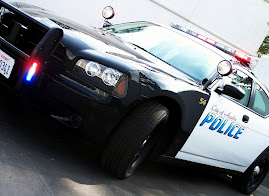Riding a
police motorcycle takes a great deal of training and hard work to maintain your riding proficiency and skill level. Prior to hitting the street on an enforcement motor, the rider goes through countless hours of slow speed training and throttle/clutch control practice. The new rider learns not only how to control the bike, but to trust the bike and understand what the vehicle can do as well. Our officers practice for at least a couple of months prior to attending an actual police motorcycle rider school. The motor school is at minimum, an 80 hour course with certain skills and tasks that must be passed in order to graduate. After completion of a motor school, the police officer still rides with a motor training officer for a period of time. Motor officers normally participate in quarterly training thereafter to maintain those perishable skills.
Many people think that training to ride fast is one of the main focuses. Actually, riding at speed is only a small portion of what a police motor officer learns. Much of the training focuses on very slow speed riding, turning and manipulating the motorcycle through tight cone patterns, and avoiding obstacles. The majority of time, the police motor officer rides in heavy traffic and must negotiate their way through a sea of vehicles.
Police motors are valuable tools for law enforcement, not only for traffic or directed enforcement, but also for uses in crowd control and responding to calls where conventional units might be delayed due to traffic.
Remember to always ride safe! HERE is a link to a previous entry on rider safety.










No comments:
Post a Comment